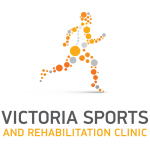Texter’s thumb is a very painful condition that is medically referred to as De Quervain’s tenosynovitis. It affects two main tendons of the thumb and wrist called the extensor pollicis brevis (EPB) and the abductor pollicis longus (APL). In repetitive tasks of the thumb, or with prolonged sustained contraction, the muscles fatigue and tighten. As they tighten, the tendons become taught (think of tightening a guitar string) and place extra pressure on the attachment regions. Over time, this can cause friction and inflammation which leads to sharp pain and inability to complete proper movement and control of the hand and thumb.
Texter’s thumb is very painful and can be extremely debilitating. Most commonly, we see this condition when people have been using their phones much more than normal, especially if they have upgraded to a bigger phone as the grip position changes. It is also common in pregnancy (and can be quite stubborn), people who work in repetitive jobs, certain sports and hobbies such as playing music and fishing and it is very common in mums of young children (as the lifting, feeding, burping, changing all involves repetitive side deviation and control of this region).
More mild cases of De Quervain’s can last from 4-6 weeks and more severe cases can be much longer, especially if requiring surgery. This is why it is vital to stop the aggravation and prevent worsening of the condition.
As painful as the condition is, it actually responds really well to treatment. Treatment from an Osteopath will begin with a thorough history and examination including the orthopaedic test known as Finklesteins. This ensures that we have correctly diagnosed De Quervain’s and avoids the need to have an ultrasound or other imaging. The treatment then provided normally includes massage, dry needling, muscle and joint stretching and large focus on patient education. The most important factor is to try and avoid the aggravating task, or severely decrease it if it is vital. Bracing or splinting which is similar to the bracing of a tennis elbow type brace can also be helpful. Some studies have shown that splinting the thumb for a minimum of two weeks is the most important factor in having a quicker recovery and avoiding reaggravation, however for people that find this really difficult, taping or bracing is a great alternative. Once the acute phase has improved, your Osteopath will then prescribe you a range of rehabilitation exercises to re-strengthen the region and work through any other compensations that you may have.
If this conservative management proves to not be effective in your case, we will always refer you back to your GP for support through medications such as anti inflammatories and in some cases recommend a cortisone injection to help reduce the swelling in the immediate area. In extremely severe cases, surgery can be needed to decompress the region, however this is very rare.
Please remember in any injury, prevention is always better than treatment. So if you find that you are on your phone a lot more these days, or have started something new in the garden that is requiring a lot more grip and repetition, please make sure you stretch, heat pack and massage your forearms or come in for a treatment as soon as you notice the pain worsening.
